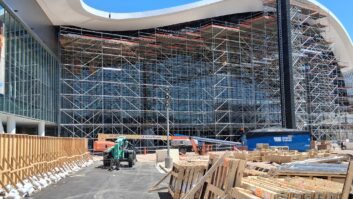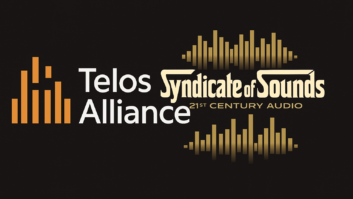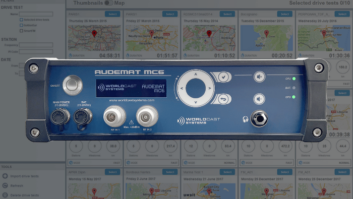In recent weeks, the Federal Communication Commission’s inbox has been flooded with suggestions from broadcasters and others about how the agency can weed out what many are calling “antiquated” rules.
Earlier this April, in an 80-page filing, the National Association of Broadcasters urged the FCC to seize the moment and fundamentally modernize its regulatory framework, beginning with reforms to the national television ownership cap and the local radio and TV ownership rules — changes that the association says are long overdue.
But in newly-filed reply comments, the NAB adds that some rules are better left in place lest the agency harm localism and service reliability.
As part of its “Delete, Delete, Delete” initiative, the FCC has encouraged comment asking the public to identify FCC rules that are better taken to the chopping block … and comment broadcasters did.
The wish list from large and small broadcasters includes loosening ownership caps, changes to EEO rules, updates to technical rules and overhauling public file obligations, to name just a few.
But not all suggestions have received NAB’s gold seal of deregulatory approval.
On April 28, the NAB submitted 48 additional pages of reply comments.
For example, the association opposes certain proposals by low-power FM advocates that could “change the local nature of the service and increase the risk of interference to FM services.” Specifically, the NAB rejected proposals to allow LPFM stations to run commercial advertising and boost their maximum power from 100 watts to 250 watts.
“Allowing LPFM stations to broadcast commercials would upend the FCC’s purpose in creating LPFM as a noncommercial service,” said NAB. “The airing of ads would change the incentives of LPFM operators, and in turn, potentially reduce the type of hyper-local programming that LPFM is intended to provide.”
The NAB wrote that it is wholly opposed to allowing LPFMs to more than double their maximum power, for doing so would “contradict congressional intent.”
“Allowing LPFM stations to dramatically increase power would undermine the careful balance that Congress struck between promoting opportunities for LPFM stations and protecting other FM services from interference, which was predicated on the 100-watt maximum power for LPFM in place at the time,” it said. Creating a new LP250 class would also further crowd an already congested FM band.
The association also objected to a rule change proposal from GeoBroadcast Solutions that would allow FM stations to fully operate from “distributed transmitters” (i.e. “boosters”) instead of a single, main transmitter.
If you remember, GBS is the company that developed the ZoneCasting geotargeting technology, which Radio World has covered extensively and that recently was permitted by the FCC in November 2024. Final rules allow stations to originate unique, targeted programming via FM boosters for three minutes an hour.
But as we recently reported, in its own comments to the FCC in the “Delete, Delete” window, GBS has now sought a much more dramatic change to the radio industry landscape. The company is asking that FMs be allowed to employ “distributed transmission systems” to serve their communities, using the same coverage and non-interference requirements, but with much less expense.
[Related: “GBS Has a Bold Idea: ‘Distributed Transmission Systems’“]
NAB replied to that idea, saying: “While GBS states that the use of boosters in lieu of a main transmitter ‘could provide more robust and complete coverage inside [station] contours,’ its filing suggests an approach that would allow radio service to focus on ‘core audiences.’ From an FCC perspective, adopting GBS’s core-audience approach would represent a major policy shift, as it would facilitate stations’ ability to selectively serve only preferred pockets of listeners within their contours while leaving some areas with spotty or no service.”
The NAB did express support for some other proposals, such as one that seeks to increase UWB power by 10 dB. It also advocated to keep current FM allocation requirements in place, warning that the “elimination of the minimum distance limitation on contour protection would unavoidably increase actual interference between stations.”
Also of note, the NAB shared pointed thoughts about previously-filed comments from the musicFIRST Coalition and Future of Music Coalition, accusing the groups of “copy-paste advocacy” and “rent-seeking” to block deregulation for local radio operators.
“Putting aside the redundancy of the coalitions’ (erroneous) arguments, they also missed the basic point of the notice in this proceeding, which is pellucidly entitled Delete, Delete, Delete. Despite the FCC’s call for proposals to . . . *surprise*. . . delete FCC regulations, the coalitions volunteer rehashed arguments about keeping antiquated FCC regulations,” the NAB wrote.
Read the NAB’s full comments here.
Comment on this or any article. Email [email protected].







